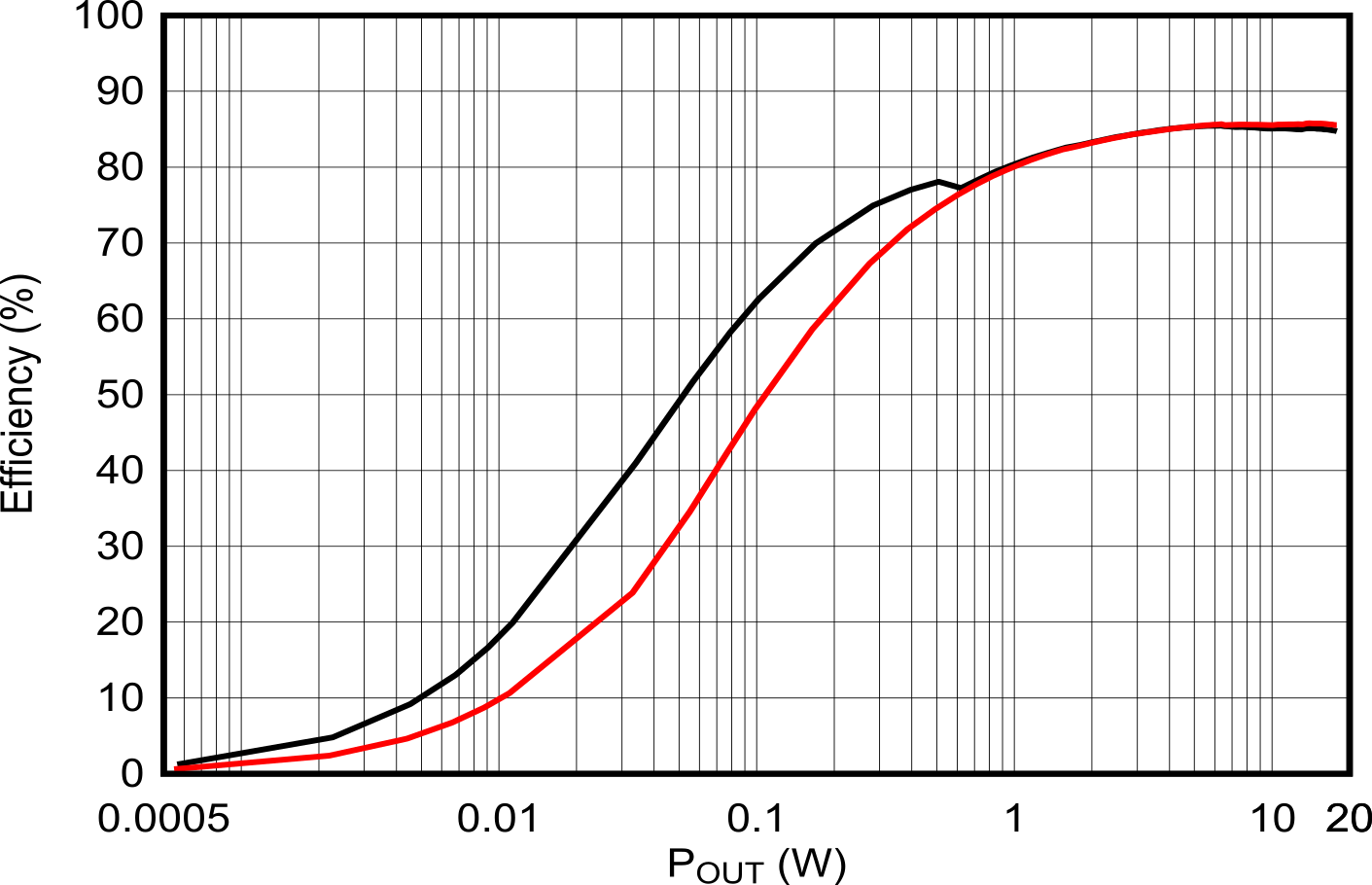-
Y-Bridge in Class-D Amplifiers for Improving Efficiency
Y-Bridge in Class-D Amplifiers for Improving Efficiency
Trademarks
All trademarks are the property of their respective owners.
1 Introduction
Smart speakers are always-on, waiting for commands and they spend most of their operation time in idle state. When in idle, these speakers are engineered to save system power, but the audio amplifiers used to drive them are usually less than 20% efficient at idle power levels. These amplifies are usually driven by single power level systems, so even while they are not driving a speaker, they are consuming significant power. TI has created an innovative architecture that can reduce not just idle power consumption by 90% but also improve efficiency by 15-20% at low levels of power without affecting the audio performance.
As shown in Figure 1-1, when Y bridge is being used efficiency is significantly improved at low power over the traditional use of PVDD supply.
 Figure 1-1 Efficiency
Improvement by Using Y Bridge
Figure 1-1 Efficiency
Improvement by Using Y Bridge |
| Black = Y-Bridge enabled Red = Y-Bridge disabled |